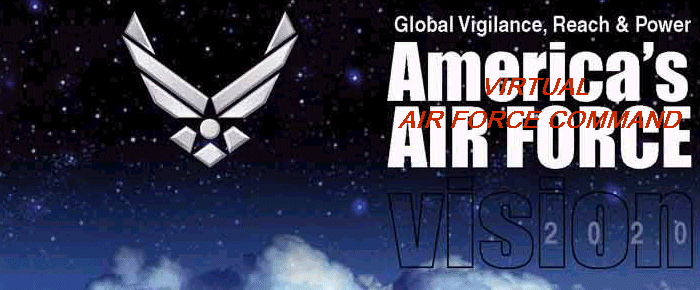
|
|
|
|
|
 |
FS98 USAF C-9 Nightingale Name: c9.zip Size: 107,561 Date: 10-22-1997 Downloads: 3692 FS98 USAF C-9 Nightingale transport. A military version of the McDonnell Douglas DC-9 series 50, used for air evacuation and medical transport. By Mike Vidal and Eric Johnson. |
|
 |
FS98 USAF C-9A Name: usafc9a8.zip Size: 35,880 Date: 08-12-1999 FS98 USAF C-9A twin engine jet VIP transport. Original by Brian Quayle, repainted by D. Bracci |
|
| FS98 USAF C-9A Name: usafc9a8.zip Size: 35,880 Date: 08-12-1999 FS98 USAF C-9A twin engine jet VIP transport. Original by Brian Quayle, repainted by D. Bracci |
||
| FS98 USAF VC-9C Name: usafvc9c.zip Size: 37,356 Date: 08-12-1999 FS98 USAF VC-9C twin engine jet VIP transport. Original by Brian Quayle, repainted by D. Bracci. |
The C-9A Nightingale is a twin-engine, T-tailed, medium-range, swept-wing jet aircraft used primarily for the Air Mobility Command's aeromedical evacuation mission. The C-9C is used to transport high-ranking government and Department of Defense officials for special air missions.
The C-9A Nightingale is a modified version of the Boeing Company's DC-9. It is the only aircraft in the inventory specifically designed for the movement of litter and ambulatory patients.
The C-9A's airlift capability to carry 40 litter patients or 40 ambulatory and four litter patients, or combinations of those, provides the flexibility for AMC's worldwide aeromedical evacuation role.
In addition to speed, quiet and comfort for patients, the aircraft has
many special features for the care of patients:
| Hydraulically operated folding ramp which allows for efficient loading
and unloading of litter patients and special medical equipment. | |
| Ceiling receptacles for securing intravenous bottles. | |
| A special care area with a separate ventilation system for patients
requiring isolation or intensive care. | |
| Eleven vacuum and therapeutic oxygen outlets, positioned in sidewall
service panels at potential litter tier locations. | |
| A 28 VDC outlet located in the special care area. Twenty-two 115 VAC-60
hertz electrical outlets, located throughout the cabin, permit the use of cardiac
monitors, respirators, incubators and infusion pumps at any location within the cabin. | |
| A medical refrigerator for preserving whole blood and biological drugs. | |
| A medical supply work area with sink, medicine storage section and work
table, fore and aft galleys and lavatories. | |
| Aft-facing commercial airline seats for ambulatory patients. | |
| A medical crew director's station with desk, communication panel and a
control panel to monitor cabin temperature, therapeutic oxygen and vacuum systems. | |
| An auxiliary power unit that provides electrical power for uninterrupted cabin air conditioning, quick servicing during en route stops and self-starting for the twin engines. |
The 375th Airlift Wing at Scott Air Force Base, Ill., operates 10 C-9A Nightingales for AMC. The normal crew aboard the C-9A consists of a pilot, a co-pilot, two flight nurses, three aeromedical evacuation technicians and one flying crew chief. C-9A's are assigned to the 374th Airlift Wing at Yokota Air Base, Japan, for use in the Pacific theater. C-9s are also stationed in Europe at Ramstein AB, Germany.
The C-9A demonstrates its uniqueness and versatility every day by its ability to serve more than 660 military, Department of Veterans Affairs and civilian hospitals, using 650 military and commercial airfields throughout the world. Additionally, stateside, it flies 37 scheduled and approximately five urgent missions weekly. The C-9A is the only aircraft dedicated solely for aeromedical evacuation at locations around the world.
The 89th Airlift Wing at Andrews AFB, Md., operates the C-9C for the airlift of medium-sized delegations of government and DOD officials. The aircraft is used for worldwide operations and is often used to transport the vice president or the first lady.
Primary Function: C-9A, Aeromedical evacuation; C-9C,
distinguished visitor support
Contractor: Boeing Company
Thrust: 14,500 pounds, each engine
Length: 119 feet, 3 inches (36.4 meters)
Wingspan: 93 feet, 3 inches (28.4 meters)
Height: 27 feet, 5 inches (8.4 meters)
Ceiling: 37,000 feet (11,277 meters)
Maximum Takeoff Weight:C-9A, 108,000 pounds (48,988 kilograms); C-9C,
110,000 pounds (49,886 kilograms)
Speed: 525 mph at 33,000 feet (455 knots true airspeed)
Range: 2,500 miles
Crew: C-9A, Eight (pilot, co-pilot, flying crew chief, two flight nurses and
three aeromedical technicians)
C-9C, Eight (pilot, co-pilot, flight engineer, communication systems operator, four
in-flight passenger service specialists)
Load: C-9A, 40 litters or four litters and 40 ambulatory or any combination;
C-9C, 12 passengers
Date Deployed:August 1968
Unit Cost: C-9A, $15.9 million; C-9C, $21 million
Inventory: C-9A, Active force, 20; Reserve, 0; ANG, 0;
C-9C: Active force, 3; Reserve, 0; ANG, 0
|
Send mail to VAFC Webmater
with questions or comments about this web site.
|